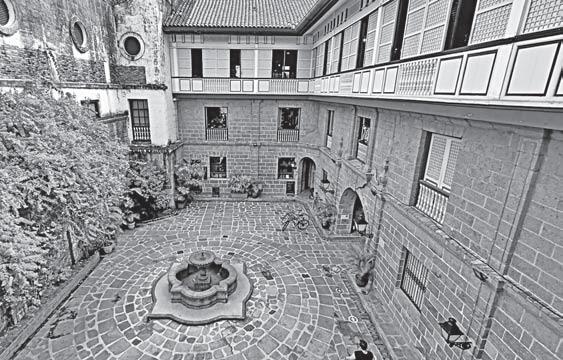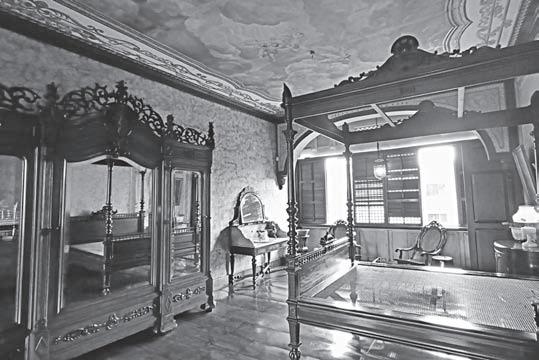
1 minute read
iNTr AmurOS LikE NEvEr BEfOrE
Once, I biked to Papakape, an artisan coffee shop inside Fort Santiago, Another time, I indulged in the flavors of several spirits and whiskey at the Destileria Limtuaco Museum, while the other times, it was on a date to Museo de Intramuros and attending a friend’s wedding at San Agustin Church. I’ve never really explored the whole Intramuros like a curious tourist before.
That’s why I’m glad I went to the launch of Klook’s “Intramuros Pass”— a tour designed to let tourists customize their Intramuros experience with options to choose where to go and how to explore it: by foot, by a Bambike (bamboo bike) or by an Electric Chariot (segway ride).
Klook and the Intramuros Administration gave us a tour of Manila’s walled city in the afternoon so that we could experience what it’s like to rediscover Intramuros. These are some of the attractions we visited.
Museo de Intramuros
R EL Ig IO u S a rt played a major role in the evangelization of most of the Philippines during the Spanish colonization period. To aid in their catechizing efforts, Spanish friars commissioned local artists to create paintings, sculptures, engravings, and metalworks depicting biblical scenes and holy figures.
The Museo de Intramuros, which is presently located on the original site of San Ignacio Church (18991945), has collected, preserved, and displayed some of these religious art pieces discovered throughout the country. u n fortunately, most of the artists who created these magnificent artifacts from the late 17th and early 18th centuries remain unknown. A visit here will not only illuminate the importance of religious art in our Christianization but will also provide insight into the talents of nameless and faceless Filipino artists from bygone generations.

Casa Manila Museum
C A SA Manila Museum is a replica of the 1850s San Nicolas Mansion that originally stood along Calle Jaboneros in Binondo, Manila. Designed by ar - chitect J. Ramon L. Faustmann, Casa Manila was constructed in 1980 on one of Intramuros’ founding villages, Barrio San Luis, directly across from San Agustin Church.
Depicting a typical Filipino “ilustrado” home, the house showcases a series of living quarters including a library, kitchen, music and study room, oratorio (prayer room), and even a banquet hall, decorated with antique furniture pieces and ornaments made in China and Europe and by local artisans.

Blending perfectly with the foreign objects are indigenous elements like the Capiz windows, antique treasure chests, and other symbols of Filipino artistry and carpentry works. Each room comes with a different ceiling design that stood out thanks to its intricate metalwork influenced by the plasterwork seen in old houses in Europe.
Casa Manila clearly shows how the affluent families from the 19th and





